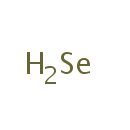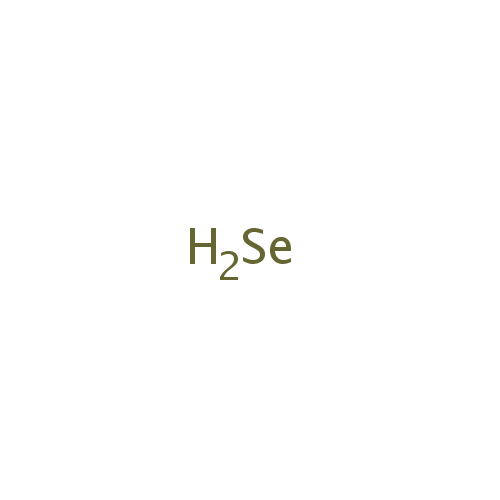
Hydrogen selenide (PAMDB000804)
| Record Information | ||||||||||||||||||||||||||||||||||||||||||||||
|---|---|---|---|---|---|---|---|---|---|---|---|---|---|---|---|---|---|---|---|---|---|---|---|---|---|---|---|---|---|---|---|---|---|---|---|---|---|---|---|---|---|---|---|---|---|---|
| Version | 1.0 | |||||||||||||||||||||||||||||||||||||||||||||
| Update Date | 1/22/2018 11:54:54 AM | |||||||||||||||||||||||||||||||||||||||||||||
| Metabolite ID | PAMDB000804 | |||||||||||||||||||||||||||||||||||||||||||||
| Identification | ||||||||||||||||||||||||||||||||||||||||||||||
| Name: | Hydrogen selenide | |||||||||||||||||||||||||||||||||||||||||||||
| Description: | Hydrogen selenide is a metabolite of selenium which could have potential antiangiogenic effect in the chemoprevention of cancer. The hydrogen selenide is a key intermediate in the selenium methylation metabolism of inorganic and organic selenium compounds. Accumulation of the hydrogen selenide resulting from inhibition of the selenium methylation metabolism, detoxification metabolic pathway of selenium, is found in animals following repeated administration of a toxic dose of selenocystine. The excess of the hydrogen selenide produced by inhibition of the selenium methylation metabolism contributes to the hepatotoxicity caused by selenocystine. (PMID: 9414580, 11799926) | |||||||||||||||||||||||||||||||||||||||||||||
| Structure | ||||||||||||||||||||||||||||||||||||||||||||||
| Synonyms: |
| |||||||||||||||||||||||||||||||||||||||||||||
| Chemical Formula: | H2Se | |||||||||||||||||||||||||||||||||||||||||||||
| Average Molecular Weight: | 80.98 | |||||||||||||||||||||||||||||||||||||||||||||
| Monoisotopic Molecular Weight: | 81.932171892 | |||||||||||||||||||||||||||||||||||||||||||||
| InChI Key: | SPVXKVOXSXTJOY-UHFFFAOYSA-N | |||||||||||||||||||||||||||||||||||||||||||||
| InChI: | InChI=1S/H2Se/h1H2 | |||||||||||||||||||||||||||||||||||||||||||||
| CAS number: | Not Available | |||||||||||||||||||||||||||||||||||||||||||||
| IUPAC Name: | hydrogen selenide | |||||||||||||||||||||||||||||||||||||||||||||
| Traditional IUPAC Name: | hydrogen selenide | |||||||||||||||||||||||||||||||||||||||||||||
| SMILES: | [SeH2] | |||||||||||||||||||||||||||||||||||||||||||||
| Chemical Taxonomy | ||||||||||||||||||||||||||||||||||||||||||||||
| Taxonomy Description | This compound belongs to the class of inorganic compounds known as homogeneous other non-metal compounds. These are inorganic non-metallic compounds in which the largest atom belongs to the class of 'other nonmetals'. | |||||||||||||||||||||||||||||||||||||||||||||
| Kingdom | Inorganic compounds | |||||||||||||||||||||||||||||||||||||||||||||
| Super Class | Homogeneous non-metal compounds | |||||||||||||||||||||||||||||||||||||||||||||
| Class | Homogeneous other non-metal compounds | |||||||||||||||||||||||||||||||||||||||||||||
| Sub Class | Not Available | |||||||||||||||||||||||||||||||||||||||||||||
| Direct Parent | Homogeneous other non-metal compounds | |||||||||||||||||||||||||||||||||||||||||||||
| Alternative Parents | ||||||||||||||||||||||||||||||||||||||||||||||
| Substituents |
| |||||||||||||||||||||||||||||||||||||||||||||
| Molecular Framework | Acyclic compounds | |||||||||||||||||||||||||||||||||||||||||||||
| External Descriptors |
| |||||||||||||||||||||||||||||||||||||||||||||
| Physical Properties | ||||||||||||||||||||||||||||||||||||||||||||||
| State: | Solid | |||||||||||||||||||||||||||||||||||||||||||||
| Charge: | 0 | |||||||||||||||||||||||||||||||||||||||||||||
| Melting point: | Not Available | |||||||||||||||||||||||||||||||||||||||||||||
| Experimental Properties: |
| |||||||||||||||||||||||||||||||||||||||||||||
| Predicted Properties |
| |||||||||||||||||||||||||||||||||||||||||||||
| Biological Properties | ||||||||||||||||||||||||||||||||||||||||||||||
| Cellular Locations: | Cytoplasm | |||||||||||||||||||||||||||||||||||||||||||||
| Reactions: | Adenosine triphosphate + Hydrogen selenide + Water <> Adenosine monophosphate + Phosphoroselenoic acid + Phosphate Hydrogen selenide + 3 NADP + 3 Water <> Selenite +3 NADPH +5 Hydrogen ion Selenocysteine + Reduced acceptor <> Hydrogen selenide + L-Alanine + Acceptor O-Acetylserine + Hydrogen selenide <> Selenocysteine + Acetic acid Adenosine triphosphate + Hydrogen selenide + Water > Adenosine monophosphate + Phosphoroselenoic acid + Inorganic phosphate | |||||||||||||||||||||||||||||||||||||||||||||
| Pathways: | ||||||||||||||||||||||||||||||||||||||||||||||
| Spectra | ||||||||||||||||||||||||||||||||||||||||||||||
| Spectra: |
| |||||||||||||||||||||||||||||||||||||||||||||
| References | ||||||||||||||||||||||||||||||||||||||||||||||
| References: |
| |||||||||||||||||||||||||||||||||||||||||||||
| Synthesis Reference: | Not Available | |||||||||||||||||||||||||||||||||||||||||||||
| Material Safety Data Sheet (MSDS) | Not Available | |||||||||||||||||||||||||||||||||||||||||||||
| Links | ||||||||||||||||||||||||||||||||||||||||||||||
| External Links: |
| |||||||||||||||||||||||||||||||||||||||||||||

